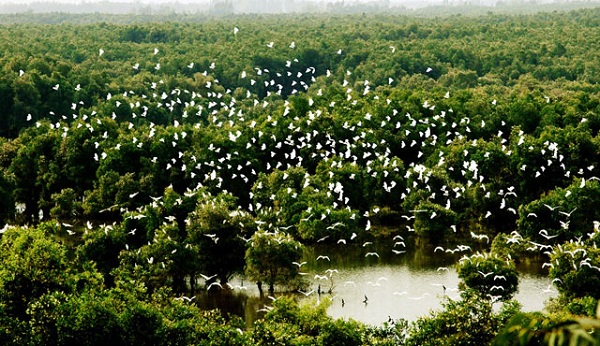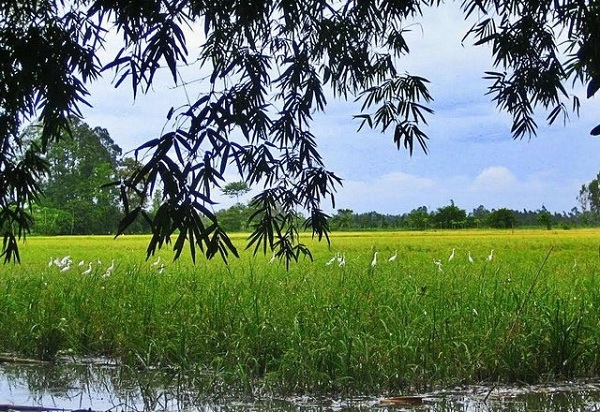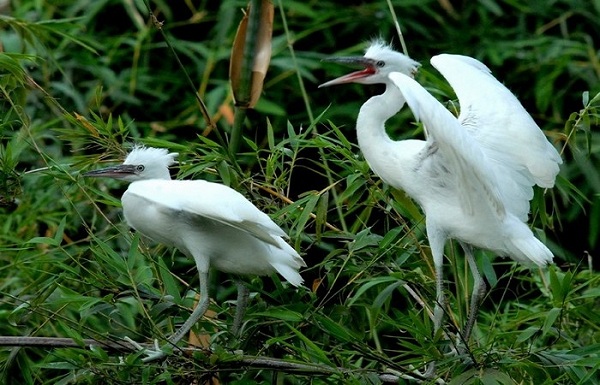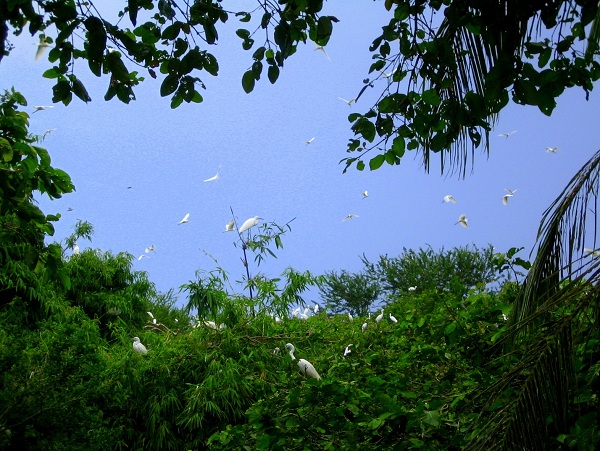Known as a popular attraction in Can Tho City with 150,000 storks of different types, Bang Lang garden has always been the top of our list to explore. According to the authorities, this site needs to get managed more efficiently so that more and more tourists come and visit it.
As you know, Mekong Delta Province is famous for its vast green rice paddies and abundant fruit garden. Meanwhile, lying in Binh Thoi Hamlet, Bang Lang stork garden is favored by its incredible nature ornamented by countless storks spreading their wings against the sky. Let’s find out why many people love this place so much!
The name “Bang Lang” of the garden
“Bang Lang” or the so-called the queen of the flowers is the name of this stork garden. This place had the name in the past since the path to the garden had been decorated with many “bang lang” flowers.
In the present, though you won’t see many trees along that road anymore, locals and tourists still name it “Bang Lang stork garden” or “Bang Lang stork sanctuary”.
Bang Lang stork garden at a glance

Situated in Binh Thoi Hamlet, Thoi Thuan Commune, about 52 km from Can Tho City center, Bang Lang garden is surely a worth-to-visit stop for travelers.
It covers 2 hectares and a big home to thousands of storks and various kinds of birds. There’s a great variety of storks residing in this place, including ibis, cattle egret, and striated heron. Also, you probably see more species making this place their homes like the little cormorant, night heron, and coucal heron.
As estimated, 80% of birds in this park are the white cattle egret. This stork species have the habit of setting up their nests here from March to August of the lunar year.
As the garden owner, Nguyen Ngoc Thuyen said, it’s quite mystical for all birds to fly to this region, which was once the rice paddy surrounded by water coconut trees and bamboos.

According to him, a lot of birds started to inhabit in this area since 1983. Surprisingly, the number of storks increased pretty much until 1992. So he had to plant more trees for birds to live and lay their eggs. For him, Thot Not District is an ideal area for them to perch on those trees.
And since birds are considered as the natural source and national asset, so once coming to his land, he’s responsible for guarding them. Nowadays, the garden has drawn more local and foreign tourists, especially during the holidays. For this reason, Can Tho also aims to better up the whole region’s infrastructure and construct larger roads to enable cars, while maintaining the green vibe of the garden.
Mr. Thuyen has also extended his effort and his money over the decades to preserve the stork species.
He gained a profound understanding of these birds’ feeding, reproduction, and other habits. In the dry season, food becomes scarce, so he needs to ditch the canal and pond to breed fish. Or he buys fish from other farmers to store food for storks.
In 2011, the garden owner planted a lot of trees to substitute those damaged by a severe flood. He had to take care of the park every day. Once a stork gets wounded in the harsh condition, he brings it home to feed it before releasing it back to nature. Thus, his sadness or happiness is certainly a reflection of this whole garden.
What’s special in Bang Lang stork garden?
On your way to the stork garden, tourists must pass the green rice fields and the interlacing canals. They will arrive at the place by cruising on Hau River. If not, choose to take a bicycle ride around the orchards, traditional craft villages and vast rice paddies.
As mentioned above, Bang Lang stork garden gets surrounded by the vast rice fields and many canals of Can Tho. In the spring, feel free to reach the park by boat if you love the feeling of floating in the river while witnessing the blooming purple Lagerstroemia flowers on the shores.
Here, tourists can enjoy the amazing sights of “bang lang” flower or the giant purple crape-myrtle as well as their pretty shadows on the water.
Note that the best time to explore the garden will be around 5 pm. It’s when all flocks of storks go back to their nests. They tend to hover on the blue sky before perching on the peaks of trees. You’ll see them posing in the wind, so do not ever forget to take beautiful pictures of those moments. There’s a 3m tower for you to contemplate such unforgettable scenes.

Since the garden owns many birds and storks of various kinds. Come here to see them flying out for hunting food or once they return. And under the red light of sunset, several groups of birds constantly fly back and then call each other.

Let’s immerse yourself into that life of the South, or try listening to the local folk music of locals here together with the sound made by nature. Bang Lang bird garden is one of the most appealing sites for those who are so into nature and discovering the tranquil scenes of the countryside. It comes with rice fields and green bamboo with birds.
After visiting the garden, how about tasting some delicious foods made from the stork? These include fried stork, stork soup and toasted stork.
How to get to Bang Lang stork garden?
Departing from Can Tho city, you must go to the National Road No.91, and then pass O Mon District before getting to Thot Not District. Next, you can keep going through a bridge that is called Bang Lang. It will take 1km to arrive at Bang Lang garden from the main road.
Note that any car won’t be allowed to access, you must rent a boat (10USD per boat) or take a “xe om” (motorbike taxi) that takes from 2 to 3 USD per person. The entrance ticket to this sanctuary costs from 10,000 to 20,000 VND.



